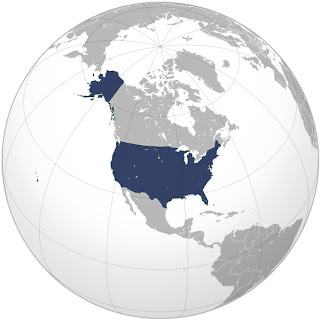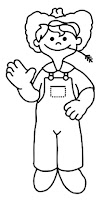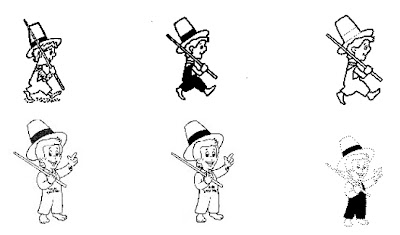In an apparent attempt to lessen the pain of the TTAB's stringent
Medinol doctrine, the Board threw a lifeline to trademark applicants and registrants by developing a (rather clunky) set of decisions that allowed one to "cure" a fraud on the PTO under certain circumstances. But with the stricter fraud standard mandated by the CAFC in
Bose, does this line of "cure" cases remain viable? I think not.

In
Medinol, Registrant Neuro Vasx filed a motion to amend its registration to remove one of two items (stents and catheters) from its identification of goods because its mark had not been used on stents. The Board found fraud (under the now defunct "knew or should have known" theory), pointing out that even if the amendment were allowed, "the question remains whether or not respondent committed fraud upon the Office in the procurement of its registration." So much for curing fraud after a challenge to a registration.
The Board first suggested the possibility of "curing" fraud in
Hurley Int'l LLC v. Volta, 82 USPQ2d 1339 (TTAB 2007). There, after commencement of the opposition, the Applicants sought to cure their non-use problem by amending their filing basis to Section 44(e). The Board observed, however, that "the proposed amendment does not serve to cure a fraud that was committed." But in
dictum the Board offered a ray of hope to trademark practitioners worried about potential fraud charges: “We note, however, that a misstatement in an application as to the goods or services on which a mark has been used does not rise to the level of fraud
where an applicant amends the application prior to publication." [Emphasis added].
The
dictum in
Hurley was given life in
University Games Corp. v. 20Q.net Inc., 87 USPQ2d 1465 (TTAB 2008) [precedential], wherein the Board ruled that an applicant who corrected a false statement as to use while the subject application was under prosecution enjoyed "
a rebuttable presumption that [the applicant] lacked the willful intent to deceive the Office."
Judge Walsh, concurring with the majority, would have gone even farther, urging that this corrective action during prosecution negated fraud altogether:
In my view, such corrective action should preclude a fraud claim: (1) because the action effectively negated the intent to establish fraud, and (2) because the allegedly false statement, once deleted, was not material to the Office's later approval of the application.
And in 2009 the Board extended its "cure" jurisprudence beyond the prosecution stage, reaching back to designate as precedential its decision in
Zanella Ltd. v. Nordstrom, Inc., 90 USPQ2d 1758 (TTAB 2008). It adopted the approach of the panel majority in
University Games in ruling that correction of a false statement regarding use,
if made before a registration has been challenged, creates "a rebuttable presumption that [registrant] did not intend to commit fraud." [Emphasis added].
So, prior to the CAFC's decision in
Bose, applicants and registrants who were concerned that an error in an application or registration regarding use of a mark might lead to a fraud claim, were given a way to cure the problem by filing a corrective amendment -- the sooner the better, and hopefully before any challenge arose.
But that "cure" jurisprudence was developed under the
Medinol fraud regime, where "knew or should have known" was the relevant standard.
Bose requires a much more substantial showing to support a finding of fraud -- just what that standard is remains to be seen. The CAFC in
Bose specifically declined to rule on the question of whether proving a reckless disregard for the truth is sufficient to establish fraud (footnote 2), but it also gave an indication that reckless disregard might not be enough:
We [have] even held that “a finding that particular conduct amounts to ‘gross negligence’ does not of itself justify an inference of intent to deceive.” Kingsdown Med. Consultants, Ltd. v. Hollister Inc., 863 F.2d 867, 867 (Fed. Cir. 1988) (en banc). The principle that the standard for finding intent to deceive is stricter than the standard for negligence or gross negligence, even though announced in patent inequitable conduct cases, applies with equal force to trademark fraud cases. After all, an allegation of fraud in a trademark case, as in any other case, should not be taken lightly. San Juan Prods., 849 F.2d at 474 (quoting Anheuser-Busch, Inc. v. Bavarian Brewing Co., 264 F.2d 88, 92 (6th Cir. 1959)). Thus, we hold that a trademark is obtained fraudulently under the Lanham Act only if the applicant or registrant knowingly makes a false, material representation with the intent to deceive the PTO.
Bose made clear that simple negligence does not suffice for a finding of fraud and that gross negligence is not enough either. So let's suppose that reckless disregard for the truth is the minimum requirement.
Now let's think about curing fraud. If a corrective amendment regarding the use of a mark is made while the application is being prosecuted, how can there be fraud? There has been no reliance on the false statement by the PTO in that the Examining Attorney has not approved the mark for publication. So it seems to me ( as Judge Walsh stated in
Universal Games) that there is no fraud because there is no materiality and/or no reliance. [Whether there should be some other consequence for filing a false verification of the application is a different question, not addressed here.]
What about after the application has been approved for publication? Remember we have posited that the false statement regarding use was made with at least a reckless disregard for the truth. Is there any reason why the Board should allow such a false statement to be cured? We are not dealing with the innocent false statement, or even the negligent false statement, or even a grossly negligent false statement. I submit that if fraud has occurred under the heightened post-
Bose standard, then there should be no cure. Period.
In sum, I suspect that the TTAB's "cure" jurisprudence has suffered the same fate as the
Medinol fraud standard: it's now defunct too.
TTABlog further comment: On the issue of the PTO's reliance on a false statement prior to approval of an application for publication, what about the argument that (at least in some cases) the Examining Attorney conducted a search of the PTO register that would not have been as extensive or time-consuming had the identification of goods been correct in the first place? For example what if the original identification read "chewing gum and nuclear power plants," and the Examining Attorney had expended the time and energy to search for both? Now suppose the Applicant deletes chewing gum? Was the original misstatement material or not? Was there reliance by the PTO, or not?
Text Copyright John L. Welch 2010.






































